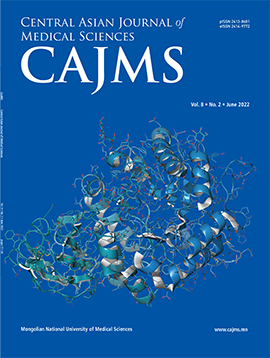Involvement of Serum Matrix Metalloproteinase-9 in the Pathogenesis of Acute Myocardial Infarction
DOI:
https://doi.org/10.24079/cajms.2016.02.004Keywords:
Matrix Metalloproteinase 9, Myocardial Infarction, Coronary Atherosclerosis, Coronary AngiographyAbstract
Objectives: Prior studies indicate that matrix metalloproteinase-9 (MMP-9) plays a key role in pathogenesis of plaque rupture. The objective of this study was to evaluate the involvement of serum MMP-9 enzyme at pathogenesis of the plaque rupture in coronary atherosclerosis. Methods: The study enrolled 80 consecutive patients who underwent percutaneous coronary intervention in our institution. Inclusion in the case group (n = 40) required a ruptured coronary atherosclerotic plaque confirmed by conventional angiography, whereas inclusion in the control group (n = 40) required stable coronary atherosclerosis. Serum MMP-9 levels were determined by ELISA. Cardiac Infarction Injury Score (CIIS) by electrocardiogram and Gensini score (Coronary Angiographic Scoring System) were utilized for assessing the severity of coronary artery disease. Results: The average level of MMP-9 was significantly higher in the case group than in the control group (396±155 ng/mL vs. 223±87 ng/mL, p<0.001) with further demonstration that MMP-9 is an independent predictor of plaque rupture (β = 0.985, p><0.001). MMP-9 is well correlated with Gensini and CIIS score (r = 0.552, p ><0.01 and r = 0.340, p><0.01, respectively). Furthermore, serum MMP-9 enzyme significantly increased in accordance with the severity of the myocardium damage (p ><0.01) by CIIS score. Conclusion: MMP-9 plays a role at pathogenesis of plaque rupture in coronary atherosclerosis.><0.001) with further demonstration that MMP-9 is an independent predictor of plaque rupture (β = 0.985, p<0.001). MMP-9 is well correlated with Gensini and CIIS score (r = 0.552, p ><0.01 and r = 0.340, p><0.01, respectively). Furthermore, serum MMP-9 enzyme significantly increased in accordance with the severity of the myocardium damage (p ><0.01) by CIIS score. Conclusion: MMP-9 plays a role at pathogenesis of plaque rupture in coronary atherosclerosis.><0.001). MMP-9 is well correlated with Gensini and CIIS score (r = 0.552, p<0.01 and r=0.340, p<0.01, respectively). Furthermore, serum MMP-9 enzyme significantly increased in accordance with the severity of the myocardium damage (p<0.01) by CIIS score. Conclusion: MMP-9 plays a role at pathogenesis of plaque rupture in coronary atherosclerosis.
Downloads
210
Downloads
Published
How to Cite
Issue
Section
License
Copyright (c) 2016 Mongolian National University of Medical Sciences

This work is licensed under a Creative Commons Attribution-NonCommercial 4.0 International License.




